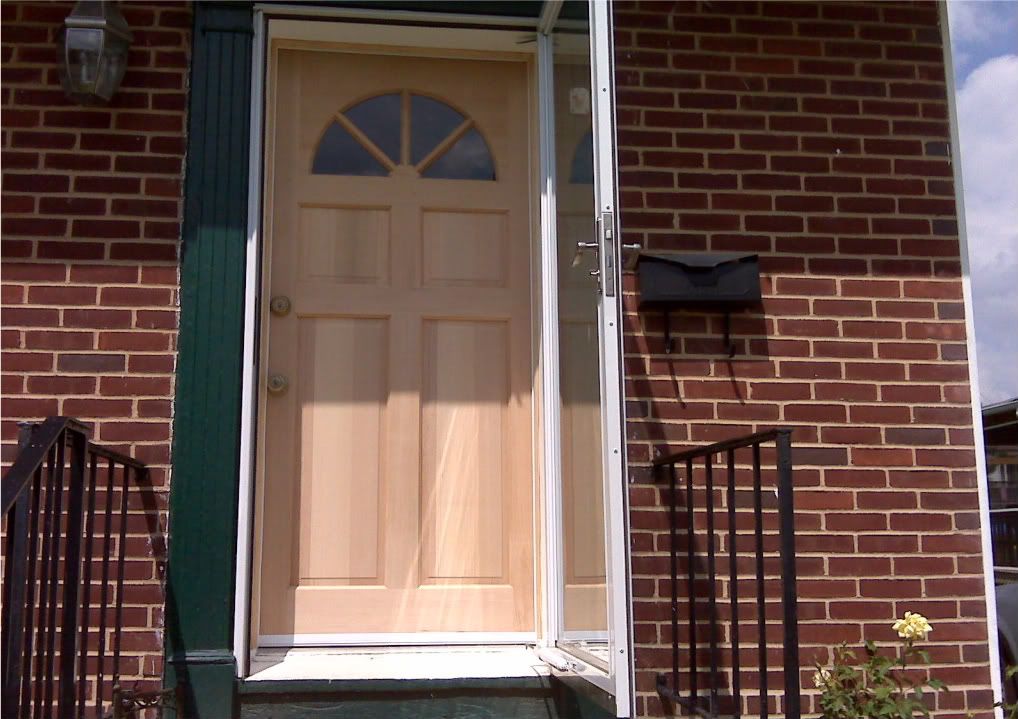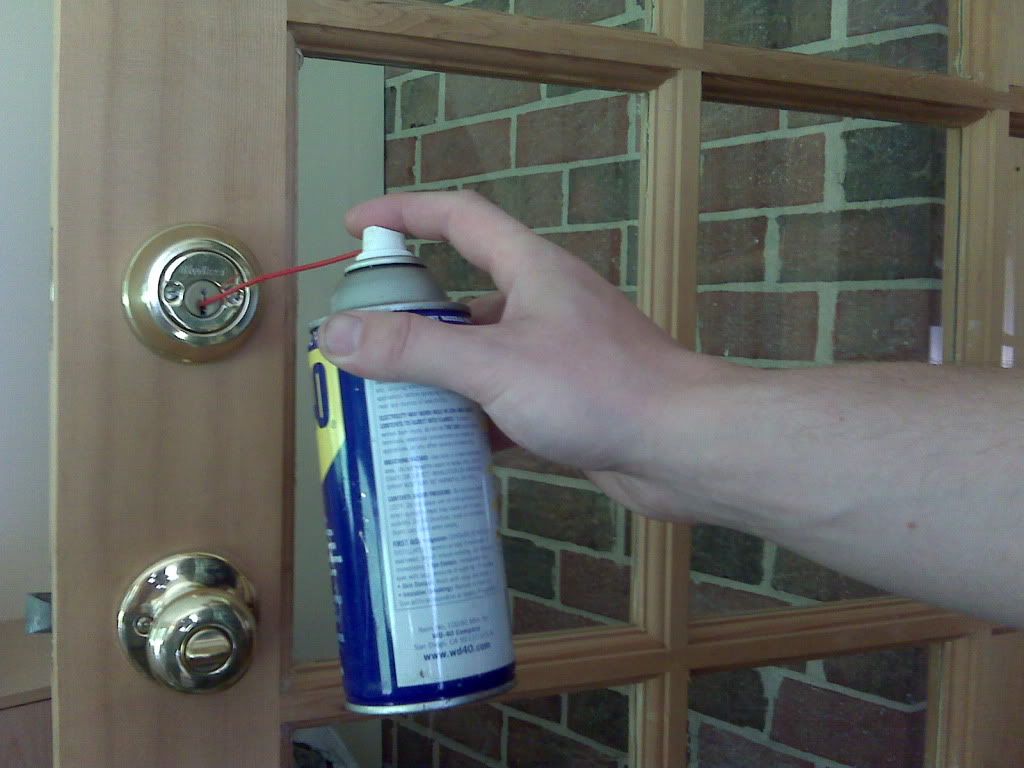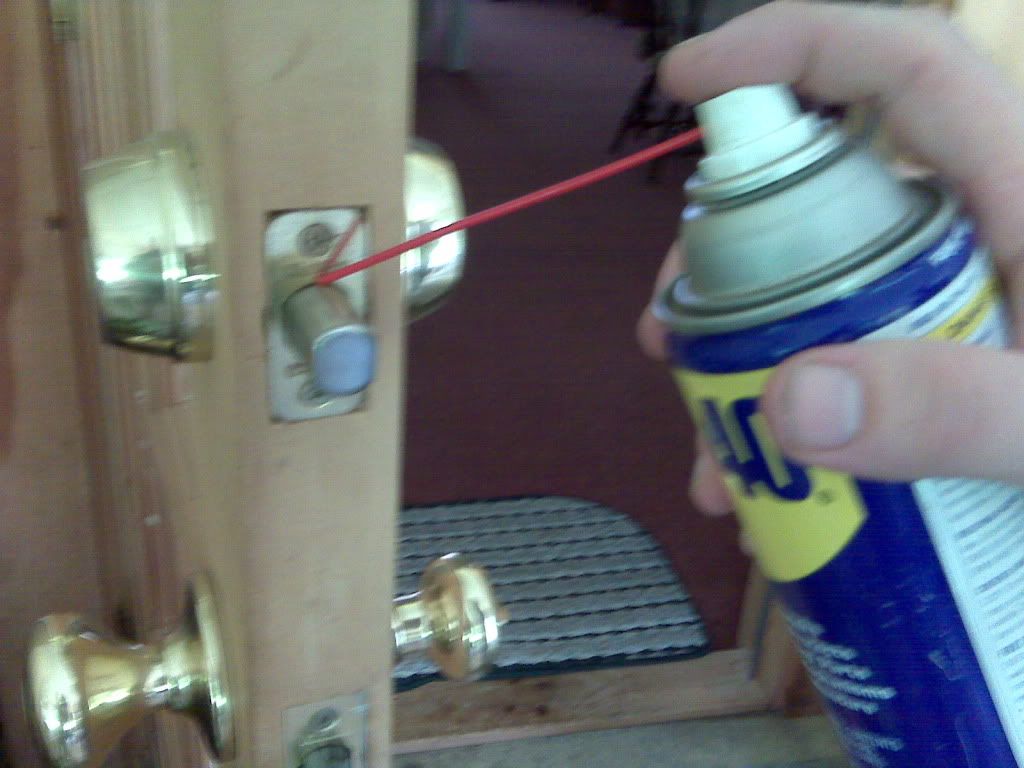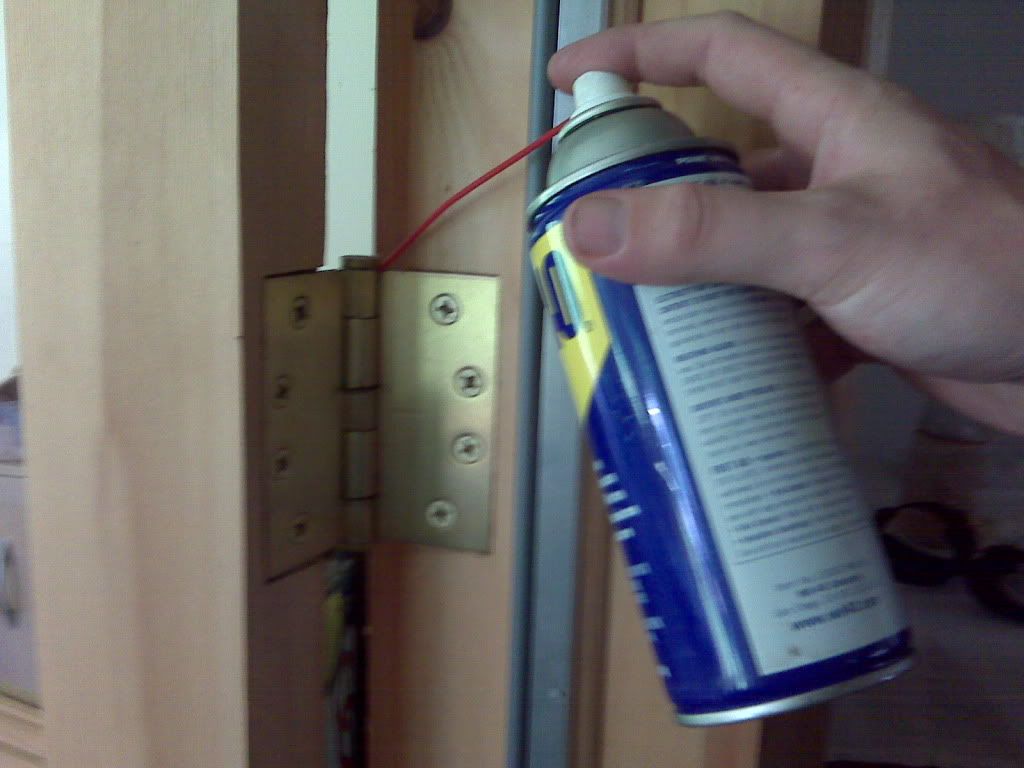I began by taking out the hinge pins, removing the old door and then removing the hinge leaf on the door jamb. You can see the old straight slot screws in the hinge.
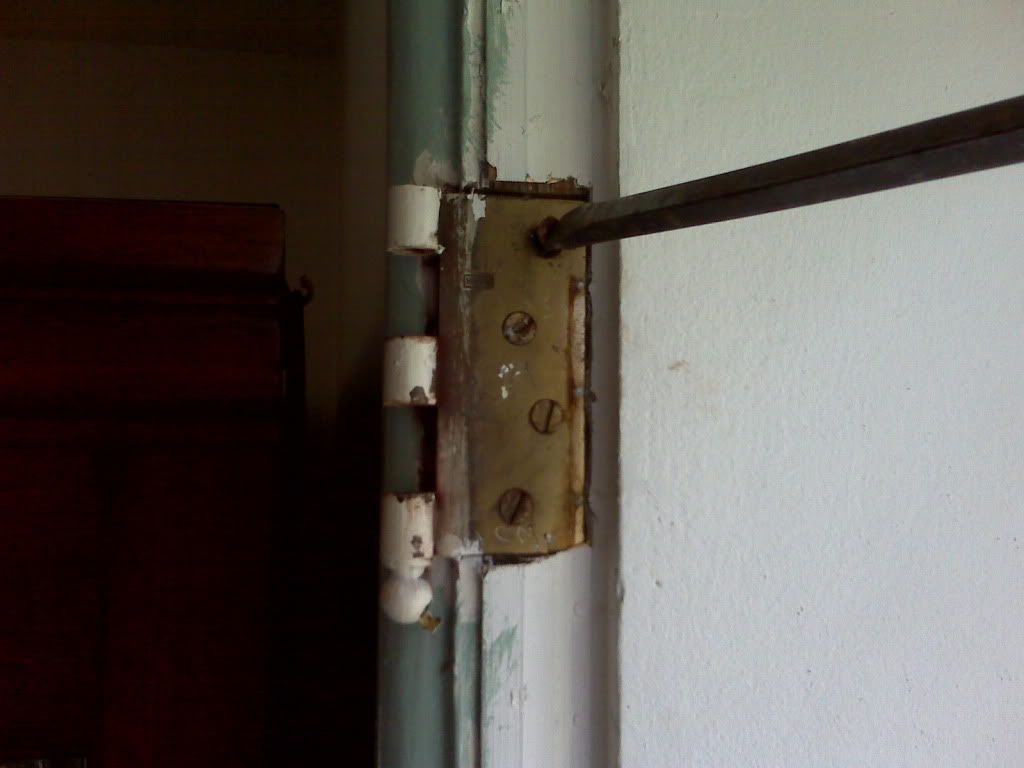
Next, the leaf of the new hinges were attached to the jamb.

I took exact measurements and cut the new door to fit the opening. Then, I placed the new door in to the opening and marked for the hinge locations. I outlined the hinge location on the new door.

I like to use the old time methods for mortising out for the hinges, so I made a series of cuts with a chisel and mallet.
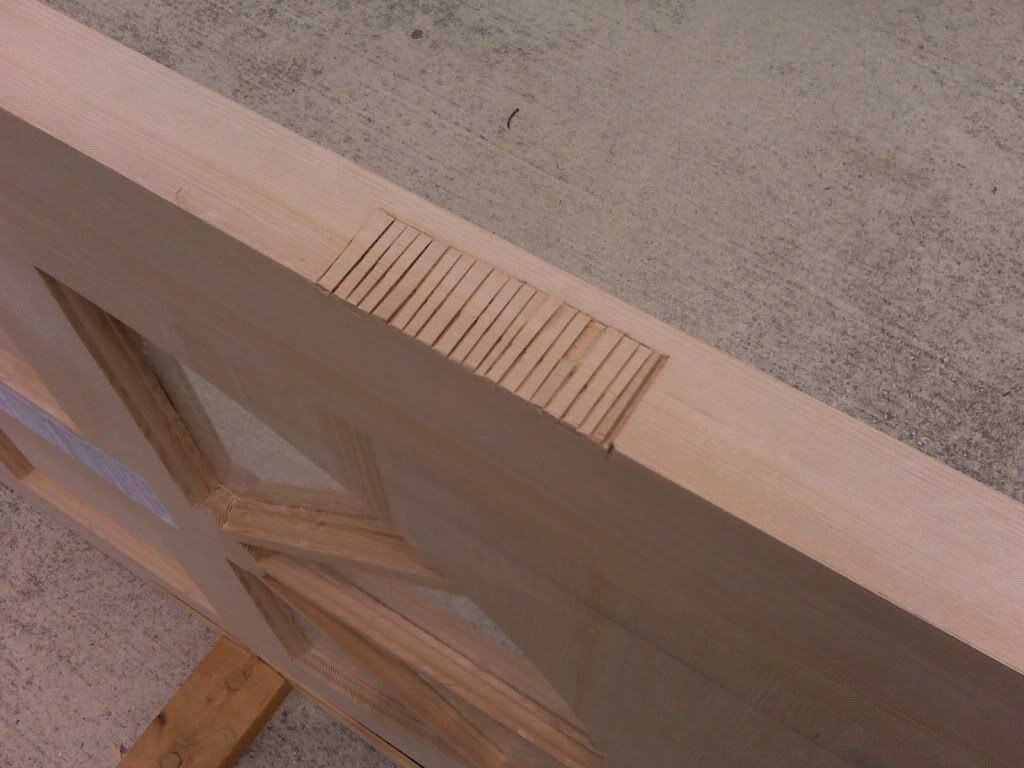
Then the area with the series of cuts was cleaned out with the chisel to complete the mortise.
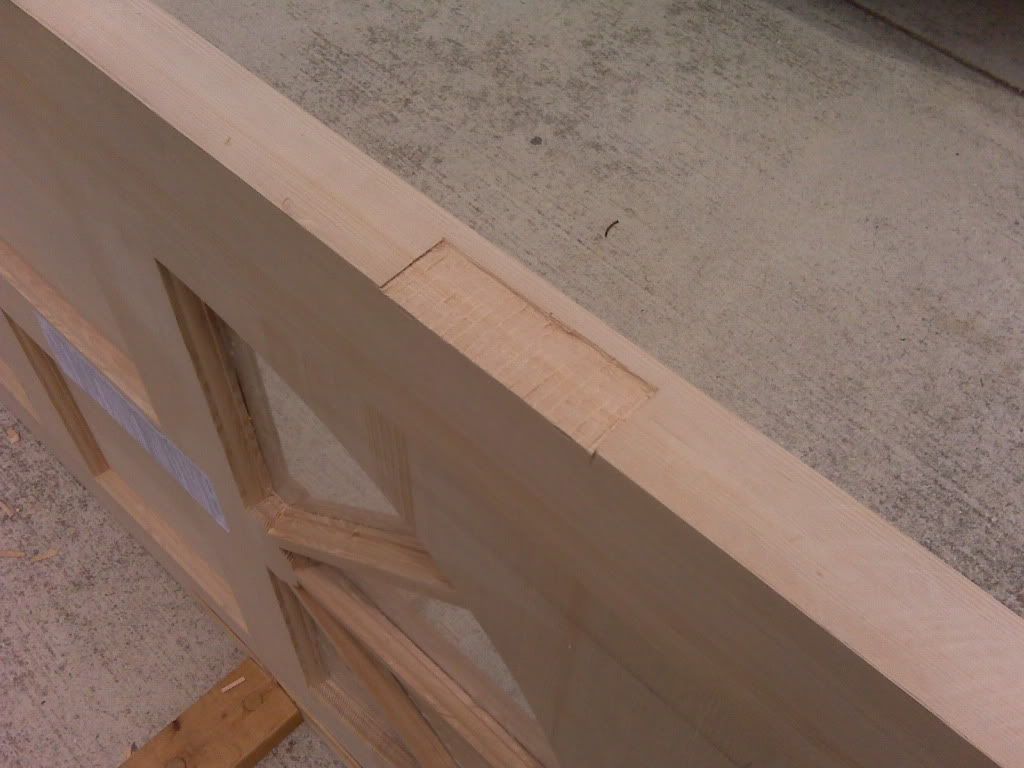
In the next photo, you can see the three new hinges installed on the new door.
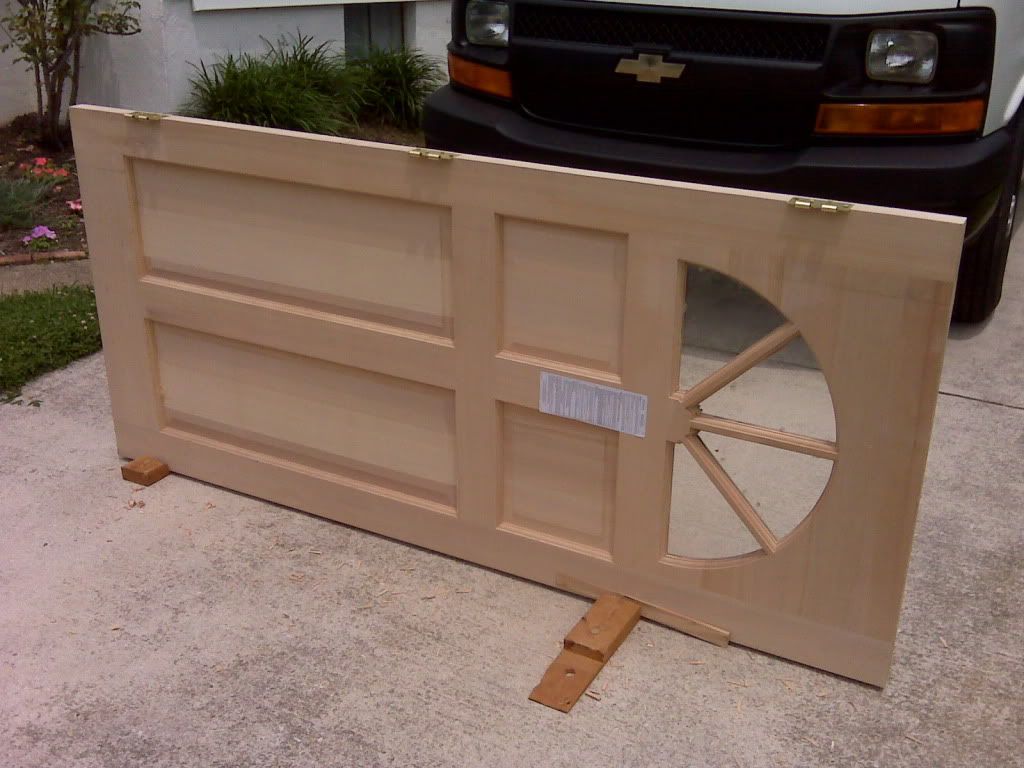
Here is the door hung in the opening, before the knob lock and deadbolt lock, weatherstripping and door bottom sweep were installed
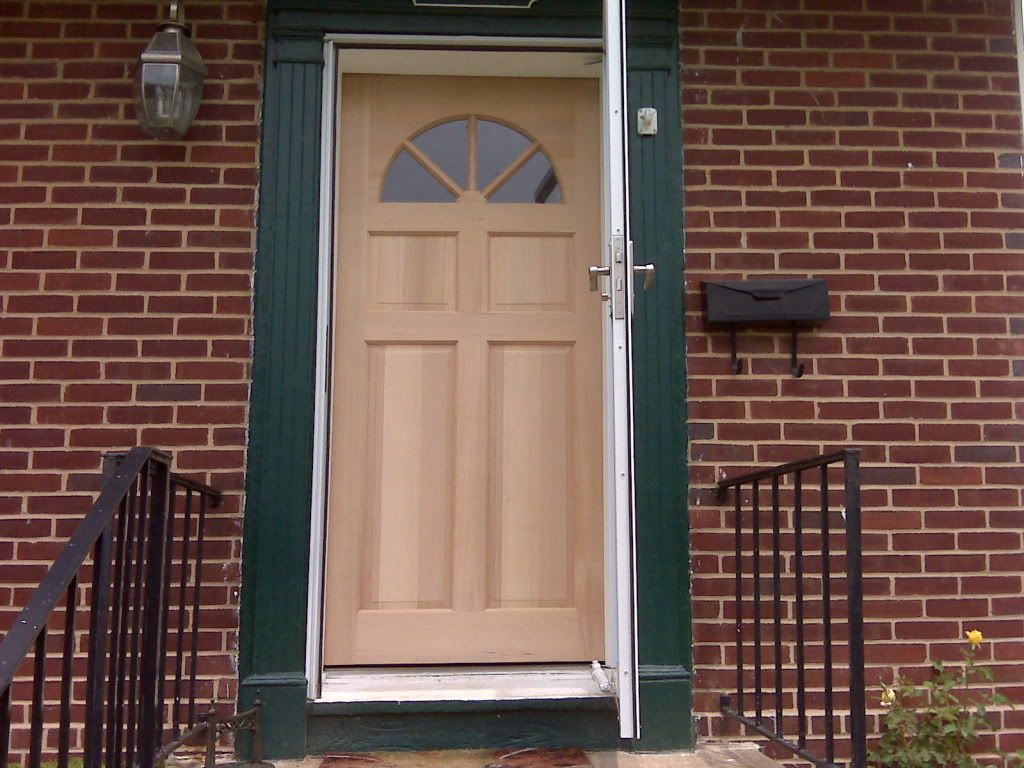
The next photo shows the new door with the knob lock, deadbolt lock and weather stripping installed.
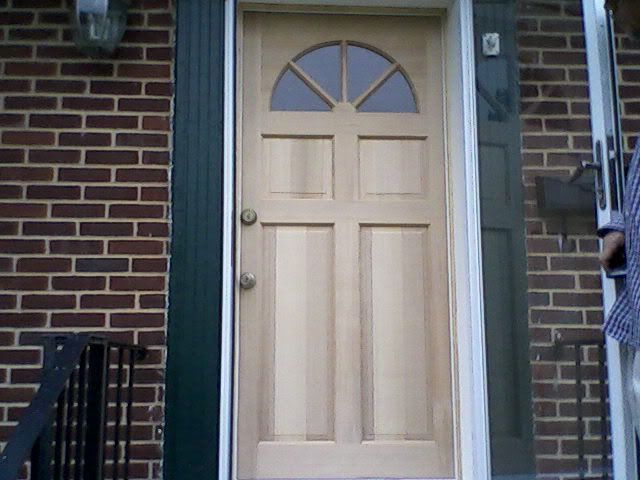
In the final photo, the door bottom sweep is installed and the door installation is complete. Now, the new door is ready for stain or primer and paint.
